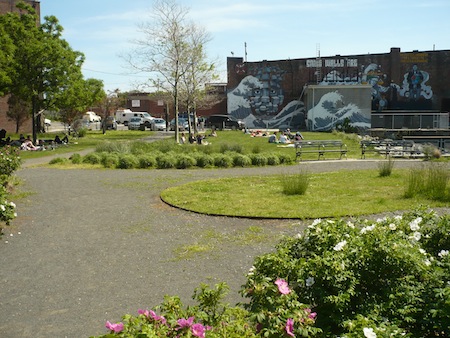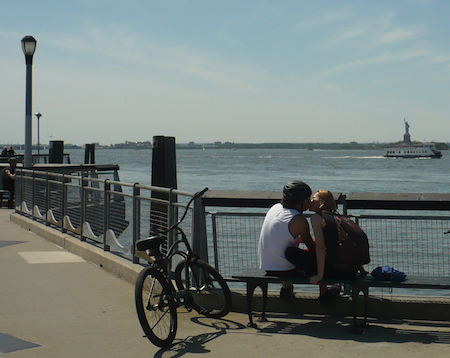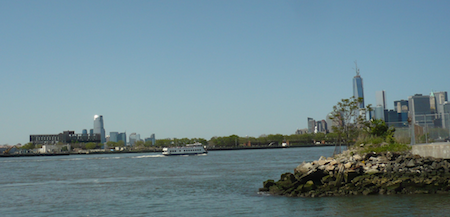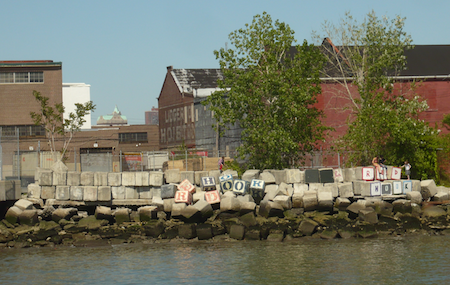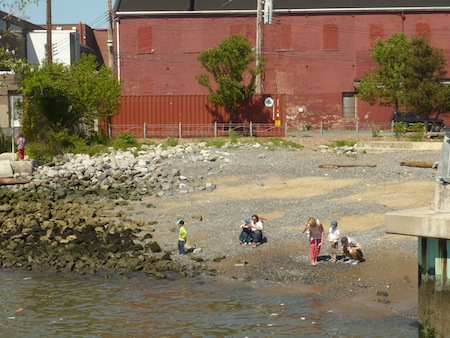There's a string of small gardens and parks that decorate Sixth Avenue, otherwise known as Avenue of the Americas, in the West Village. From north to south, there's the Jefferson Market Garden, Minetta Green and Minetta Triangle, Father Demo Square, and Winston Churchill Square. There's also Little Red Square, named not for the Moscow landmark but (presumably) for the adjacent Little Red School House.
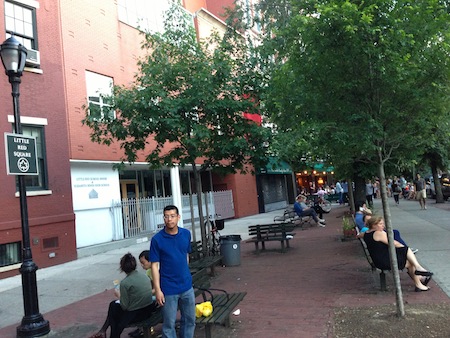
The sequence doesn't stop when you continue further south into Soho, because Avenue of the Americas down here refuses to line up precisely in parallel with the streets to its west and east, giving rise to lots of wee triangles too small for buildings.
Down here on the Soho stretch there's nothing with the green density of the Jefferson Market Garden or Minetta Green, but there is, to begin with, the sliver of a triangle known as Charlton Plaza, which I've documented before. Even though it isn't a park, and not even remotely a "plaza," I like it because of its startling narrowness. I note it again today because when I walked by the other day I saw, for the first time, its gate open.
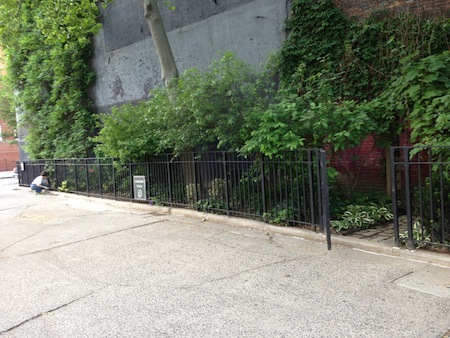
No one was inside that I could see, and, fearing transformation into a Flatlander, I didn't venture in. On the far left, you can see a woman tending the vegetation, but doing it from outside the fence – seems she knows about that sinister Flatland possibility too.
Across the street on the next block, a slightly wider but much less green triangle known as Father Fagan Park doesn't seem to get much use. Those passing through doubtless give little thought to the 27-year-old Franciscan priest who gave his life to rescue two colleagues from a fire at his Thompson Street rectory in 1938 before lending his name to this space. Plaques also honor three firefighters who died in the line of duty at another nearby blaze in 1994.
The tree partially visible on the left, with leaves obscuring the sign, is one of the three callery pear trees planted here that same year.
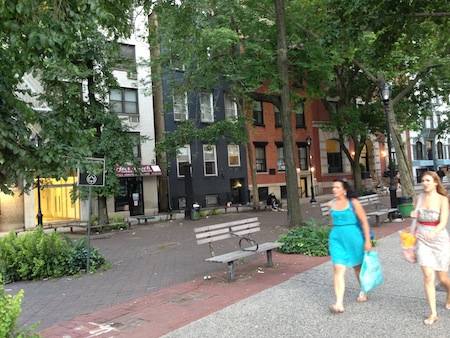
Seen from the southern end at this early evening hour, Father Fagan Park looks none too appetizing, for sure.
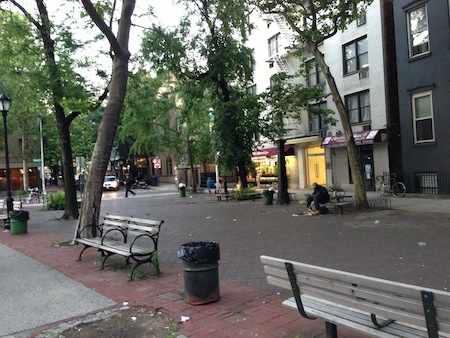
A little farther south you hit Soho Square (not a square but, of course, a triangle), which is larger and more inviting. The northern fringe now hosts a Citi Bike station, one of the few that was positioned sensibly (that is, not taking up valuable parking spaces). On this occasion, you can see that most of the bikes are out, rented. In spite of all the technical problems with the city's new bikeshare program (and the cranky old bats blasting it with unhinged fervor), many's the time I walk by a station with almost all the bikes gone, and I see people riding them around Manhattan all the time, so by that early measure, it's a success.
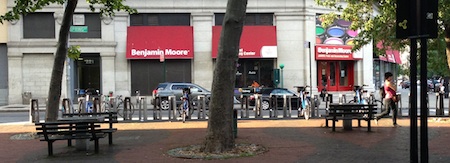
Is Soho Square a park? Well, I see the Parks Dept. leaf logo on the sign. There's no grass to speak of, but plenty of trees and benches, and a red-and-black paving pattern that sets it off from its surroundings. So I give it the benefit of the doubt and tally it up as a park.
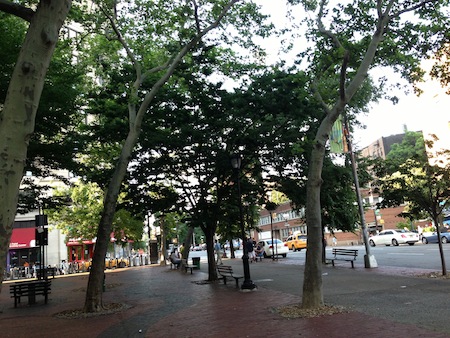
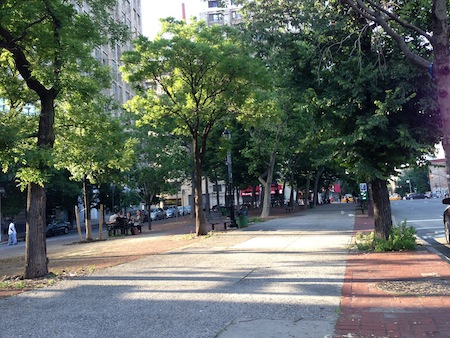
If you're wondering why Sixth Avenue was renamed Avenue of the Americas – or, to be more realistic, 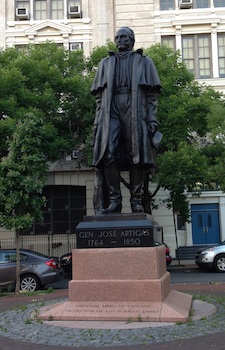 why it was given that alternate name – just walk down the southern section and you'll find monuments to figures from Latin American countries. At the southern end of Soho Square, near where its scalene triangle tapers to a point, you'll find General José Artigas, "National Hero of Uruguay," a cattle smuggler turned guerrilla warrior who became "the father of Uruguayan nationhood." This statue is a cast of an original by José Luis Zorrilla de San Martín that stands in Montevideo, and the base – here's a piece of unusual trivia – is of Uruguayan granite.
why it was given that alternate name – just walk down the southern section and you'll find monuments to figures from Latin American countries. At the southern end of Soho Square, near where its scalene triangle tapers to a point, you'll find General José Artigas, "National Hero of Uruguay," a cattle smuggler turned guerrilla warrior who became "the father of Uruguayan nationhood." This statue is a cast of an original by José Luis Zorrilla de San Martín that stands in Montevideo, and the base – here's a piece of unusual trivia – is of Uruguayan granite.
So, while Avenue of the Americas doesn't actually extend south into any other Americas, you can wander along it and acknowledge some of their heroes, while partaking of the Pan-American spirit that gave Mayor LaGuardia that crazy street-renaming idea in the first place.
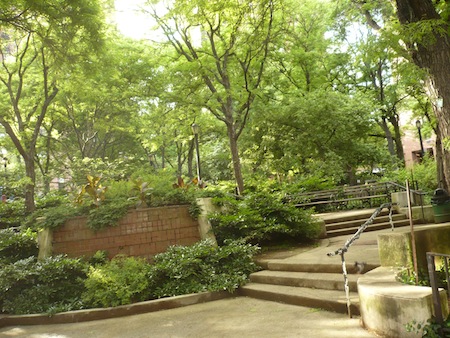
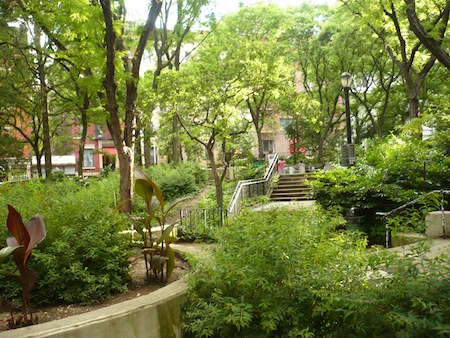
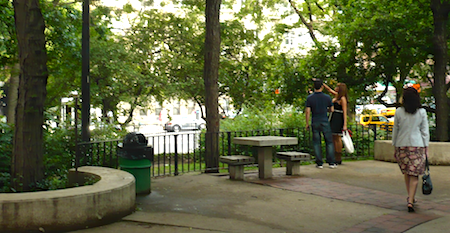

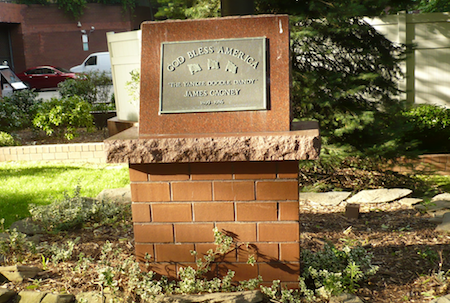
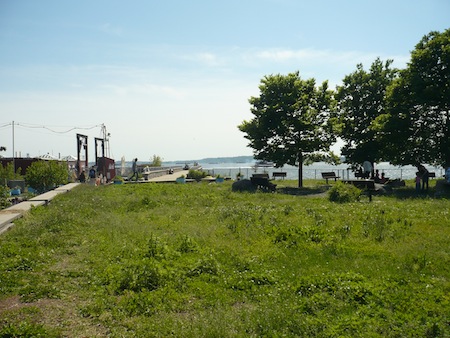
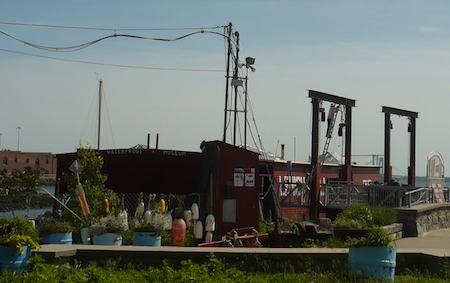
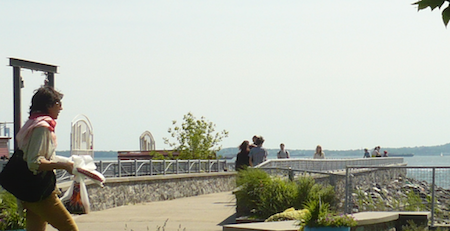
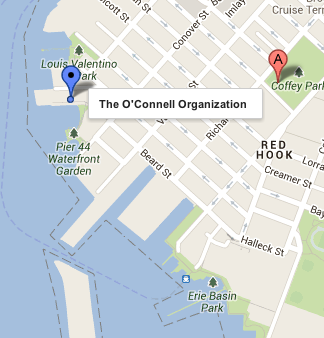 but if it didn't then, it does now. Sooner or later Google gets everywhere, doesn't it? (Usually sooner.)
but if it didn't then, it does now. Sooner or later Google gets everywhere, doesn't it? (Usually sooner.)

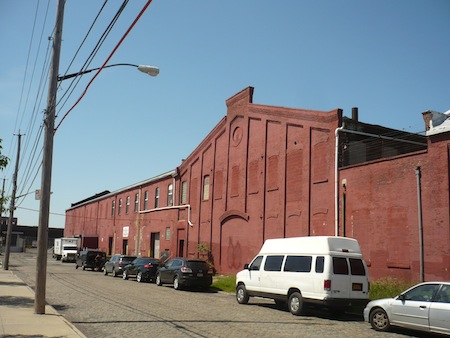

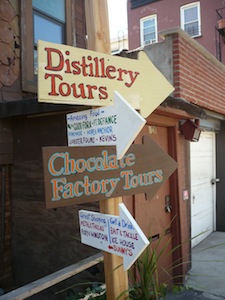 How things do change. And change again. Walking around Red Hook today, you could almost think you're in a hipster tourist town. Follow the signs to the artisanal fun!
How things do change. And change again. Walking around Red Hook today, you could almost think you're in a hipster tourist town. Follow the signs to the artisanal fun!